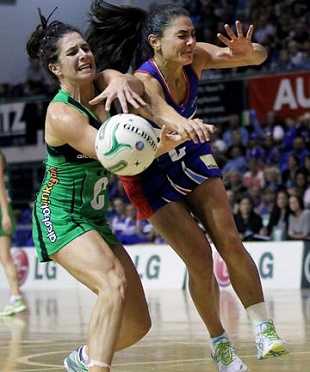Netball Safety Rules UK
Table of Contents
Getting regular, healthy exercise is particularly beneficial for most individuals. It can improve weight control and it burns lots of calories.
Moreover, playing sports and exercising helps to reduce the risk of developing cardiovascular disease. So, there is no doubt that playing netball has many benefits for living a healthy lifestyle.
It gets better:
Apart from the physical health aspect, taking part in a sport can also help with mental health issues. For many, playing netball is a chance to let your hair down and have some good clean fun!
Netball is a team sport played in a controlled environment. The fast-flowing game tests your mobility skills and physical dexterity.
Because of this, there are several netball health and safety rules and regulations to be aware of. Netball injuries associated with balance, overstretching, and pivoting are most prevalent.
Warm Up Exercises for Netball
Players perform a lot of pivoting and twisting movements. The rules and regulations of netball allow you to take one step and 3 seconds to pass the ball.
As a result, your legs will be doing most of the physical work during a game. So, beginners are likely to find it a strenuous activity until their leg muscles get stronger.
Put another way:
There are only a few serious hazards in netball to consider. But, preparation of the body starts with your general physical health. For this reason, always ask yourself:
- Are you in general good health and do you feel well enough to play?
- Is your body in good shape and have you prepared for the game?
The most important step in netball preparation takes place ahead of the game. All professional athletes warm up and warm down – and you should too!
- Proper muscle stretching should focus on the quads and hamstrings (at the back of your upper legs).
- Next, you should gently stretch your ankle tendons and ligaments as well.
- Performing a little light cardio work, to help warm up your muscles and joints before a game, is ideal (e.g. hip stretches, lunches, and leg swings).
Note: Netball is a fast-moving sport with a demand for high-cardio workouts. Always consult your doctor for a professional evaluation before you start training and playing.
Health and Safety in Netball: Techniques
All good netball players work on their balance. You will not become an effective player unless you have balanced stability and movement.
Stopping short (and abruptly) is an integral part of the game. Pivoting and spinning around are part of the balancing techniques.
This part is important:
The rules allow for some physical contact, but it cannot be ‘forced’. You cannot use physical force to hurt or endanger another player (e.g. according to marking and obstruction rules).
You will be doing a lot of jumping. Hence, you may benefit from some netball coaching drills to steer you in the right direction.
Note: Learning how to jump, and then land with soft knees, is a crucial part of netball health and safety techniques.
Netball Safety Rules for Equipment
Anyone who is serious about playing netball needs to use the proper safety gear. So, your ankle and knee joints need lots of shock absorption from a quality pair of netball shoes and socks.
Good quality sports footwear is a standard part of all netball safety equipment. They help to cushion bone joints when you jump and land.
Some players choose to wear compression sleeves or support braces. Wearing them can help to stabilize weak or injured ankles, knees, or wrists.
Note: The Gilbert Spectra netball shoes are a popular choice of footwear worn by many of the top female players.
Health and Safety in Netball Courts
As long as the playing area is safe you can play netball indoors or outdoors. However, some occupational health and safety regulations in netball relate to specifications of the court.

Wearing Earrings, Jewellery, and Fake Nails
Under the INF codified rules, players must not wear anything that may endanger themselves or any of the other players, summarised as:
- Players may wear a medical alert bracelet providing they cover it with tape.
- Fingernails must be short and smooth to avoid causing scratch injuries.
- Players with long hair must have it suitably tied back.
- No adornment or jewellery, including earrings, may be worn (exceptions apply for a wedding ring when covered with tape).
Common Injuries in Netball
Typical causes of netball injuries are overexertion, slips, falls, and awkward landings. Even so, players can also get injured after a collision (e.g. physical contact) or getting hit by the ball.
Among the common types of injuries are bruises, fractures, dislocations, and sprains (e.g. ankles, fingers, hands, knees, and wrists).
If a Player Gets Injured
- Injured players should rehabilitate in full and get approval from the officials before returning to the field of play.
- Any player who suffers a serious ankle injury should wear an ankle support brace until they have fully recovered.
- Players should not delay seeking prompt attention from someone qualified in first aid procedures (especially for the treatment of blood wounds).
Health and Fitness Benefits of Netball
Netball is good physical exercise and a whole body workout. That means it can increase muscle tone and it may actually help in the prevention of type 2 diabetes.
And how many calories do you burn playing netball?
Most netball players will burn 450 calories in an average session. Exercising also helps to improve mental health and your general mood.
Also, social team sports and games offer great networking opportunities. Thus, it offers you a chance to meet people, go places, and make new friends.
Netball Safety Video and Tips
Note: The short YouTube video has tips about netballs, including what type to buy and how to take good care of your kit. For example, the Mitre UltraGrip Match Netball with ball pump (available in white, cyan, and orange colours).

